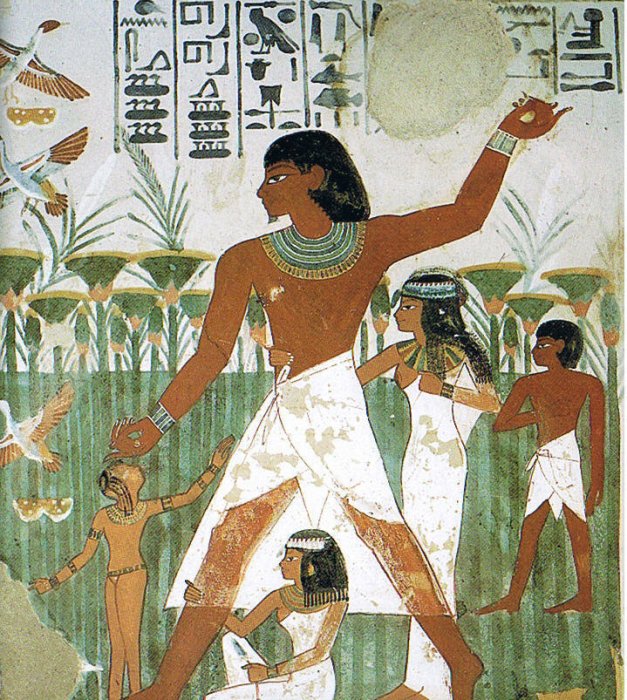Discovery Of Fish In The Sahara – What More Is Buried Under The Sand?
Don Wood – MessageToEagle.com – The discovery of fish in the Sahara can help scientists to understand why this once a grassland ecosystem turned into a desert.
Paleoclimatologists have long suspected that the “middle Holocene,” a period roughly from 7,000 to 5,000 years ago, was warmer than the present day.

New evidence confirms this theory. Researchers traveled to Takarkori rock shelter in southwestern Libya where they uncovered ancient animal remains that show climate was much different here thousands of years ago.
Fish Fossils Offer Evidence Of Dramatic Climate Changes In The Region
Today, the Saharan Tadrart Acacus mountains are windy, hot, and hyperarid; however, the fossil record shows that for much of the early and middle Holocene, this region was humid and rich in water as well as life, with evidence of multiple human settlements and diverse fauna.
Rock shelters within the Tadrart Acacus preserve not only significant floral and faunal remains but also significant cultural artifacts and rock art due to early Holocene occupation of these shelters.
Scientists excavated parts of the Takarkori rock shelter to identify and date animal remains found at this site and investigate shifts in the abundance and type of these animal remains over time.

The Tomb of Nakht, from 1500 BC, contains a tilapia hieroglyph just above the head of the central figure. Credit: Public Domain
Fish remains made up almost 80 percent of the entire find overall, which numbered 17,551 faunal remains total (19 percent of these were mammal remains, with bird, reptile, mollusc, and amphibian remains the last 1.3 percent). All of the fish and most of the other remains were determined to be human food refuse, due to cut marks and traces of burning—the two fish genera at Takarkori were identified as catfish and tilapia. Tilapia was an ancient Egyptian symbol of rebirth and the fish was associated with goddess Hathor.
See also:
Ancient DNA Illuminates Unknown ‘Ghost’ Populations In Sub-Saharan Africa
New Evidence Of The Sahara’s Age
Sahara Can Be Green Again Thanks To New Wind And Solar Technology
Based on the relative dates for these remains, the amount of fish decreased over time (from 90 percent of all remains 10,200-8000 years BP versus only 40 percent of all remains 5900-4650 years BP) as the number of mammal remains increased, suggesting the inhabitants of Takarkori gradually focused more on hunting/livestock.
Researchers also found the proportion of tilapia specifically decreased more significantly over time, which may have been because catfish have accessory breathing organs allowing them to breathe air and survive in shallow, high-temperature waters. This discovery offers further evidence that this now-desert environment became less favorable to fish as the aridity increased.
Takarkori rock shelter has once again proved to be a real treasure for African archaeology and beyond: a fundamental place to reconstruct the complex dynamics between ancient human groups and their environment in a changing climate.
What Changed The Green Sahara Into A Desert?
A major climate change took place in ancient times, some thousand years ago, when this vast area was fertile grassland. Most scientists believe the Sahara dried up due to a change in the Earth’s orbit, which affects solar insolation, or the amount of electromagnetic energy the Earth receives from the Sun. Or to use simpler words, insolation refers to the amount of sunlight shining down on a particular area at a certain time. It depends on factors such as the geographic location, time of day, season, landscape and local weather.
What changed the green Sahara into a desert is still an open question. Archaeologist Dr. David Wright, from Seoul National University has now put forward a controversial theory suggesting that humans turned Sahara into a desert.
By studying archaeological evidence documenting the first appearances of pastoralism across the Saharan region, and comparing this with records showing the spread of scrub vegetation, an indicator of an ecological shift towards desert-like conditions, Dr. Wright has reached the conclusion humans destroyed Sahara’s fertile grassland.
“In East Asia there are long-established theories of how Neolithic populations changed the landscape so profoundly that monsoons stopped penetrating so far inland,” Dr. Wright says.
He points out evidence of human-driven ecological and climatic change has been documented in Europe, North America and New Zealand. Wright believed that similar scenarios could also apply to the Sahara.
Ancient Secrets Beneath The Sand
There are many ancient secrets buried beneath the sand of Sahara. Scientists suspect there are large amounts of water under the sand. Scientists have discovered huge ancient river systems, now buried that may have created viable routes for human migration across the Sahara to the Mediterranean region about 100,000 years ago.

Flowing rivers across the Sahara desert 100,000 years ago
Were Rivers Flowing across the Sahara During the Last Interglacial? Implications for Human Migration through Africa. Image Credits: Tom Coulthard Ramirez JA, Barton N, Rogerson M, Brücher T (2013)
There are most likely also ancient remains of cities hidden beneath the sand. Archaeologists are searching for clues that may give knowledge of the ancient lost civilization of Sahara.
Satellite images reveal intriguing and mysterious structures in the Sahara Desert. The constructions are either damaged pyramids or antediluvian remains.
After spending extensive time scanning the desert of Sahara an archaeologist announced he has found a new site where a large structure is hidden beneath the sand in the Egyptian desert.
Could it be a new pyramid? No-one knows how many more pyramids, ancient cities, settlements, structures, animal remains, and artifacts could be hiding beneath the sand.
Written by Don Wood – MessageToEagle.com Staff
Expand for references









